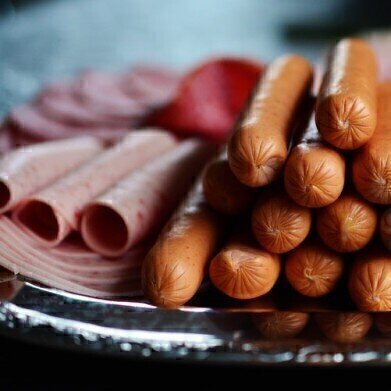Detectors
Analysing Food Dyes in Meat Using Chromatography
May 09 2019
There are many attributes used when purchasing food. For some foodstuffs, knowing the supplier is often enough, in fact, that is all we can rely on when food is sealed and packaged in a box. But for some fresh and processed foods we can rely on our senses. And we can assess the smell and appearance of the food before we purchase it.
Knowing this, some producers can enhance the appearance of foods using dyes to make food appear more appetising. But some dyes are not safe to use according to scientists and regulators. When there is a risk to the public we need simple methods to help us to analyse the foods and make sure they don’t contain anything unsafe. A recent study has looked at the analysis of dyes in meat, and the chromatographic method reported has been validated for accuracy in determining food dyes in meats.
Regulation of dyes
Food dyes are regulated in Europe under European Union legislation as they are classed as an additive. An additive is simply a substance added to food for the purpose of preservation, colouring or sweetening etc. EU legislation defines additives as ‘any substance not normally consumed as a food in itself and not normally used as a characteristic ingredient of food, whether or not it has nutritive value.’
To be used in the EU, additives - including colourings - must comply with the purity criteria in Regulation EU 231/2012 and be on the permitted list of food additives in Regulation EC1333/2008. As part of its safety evaluation, the European Food Safety Authority (EFSA) carries out safety evaluations on all food colours used in the EU. They also establish an Acceptable Daily Intake for each substance. The reason for the caution is that some additives have been linked with health risks. Hence, the need to ensure that food dyes can be measured in all food stuffs, including meat.
HPLC-UV-DAD method developed
The method, developed by researchers in Italy and reported in the journal MethodsX, used high pressure liquid chromatography with UV diode array detector to analyse 12 dye samples in both fresh meat and meat products. Chromatography methods can be developed for many different applications as discussed in the article, Integration of MS and UV Data for Peak Tracking in HPLC Method Development.
The method first used solvent to extract the dyes, a mix of methanol, acetonitrile, water and ammonia. Vortex shakers and an ultrasonic bath was used to aid extraction. After filtration the sample was then injected onto the column. Two mobile phases were used, 0.02M acetate buffer and acetonitrile at 1.2mL/min and the absorbance spectra of each dye was collected. The team report that:
‘validation parameters well comply with European Legislation. The ruggedness studies confirmed that method is applicable to pork and beef fresh meat, salami and seasoned sausage.’
Digital Edition
Chromatography Today - Buyers' Guide 2022
October 2023
In This Edition Modern & Practical Applications - Accelerating ADC Development with Mass Spectrometry - Implementing High-Resolution Ion Mobility into Peptide Mapping Workflows Chromatogr...
View all digital editions
Events
ACS National Meeting - Fall 2024
Aug 18 2024 Denver, CO, USA
Sep 04 2024 Chiba, Tokyo, Japan
Sep 04 2024 University of Warwick, Coventry, UK
Sep 10 2024 Rockville, MD, USA
Plastics Recycling World Expo Europe
Sep 11 2024 Brussels, Belgium














